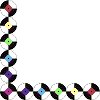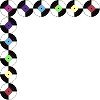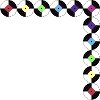

























A division of Pye Records (q.v.). Pye International was brought into being late in 1958 as an outlet for products licensed from overseas labels and from independent production companies. Several of those labels went on to appear as Pye-family labels in their own right, A&M, Buddah and Chess (q.v. all) being cases in point. America was the main source of material, but records from other countries cropped up every so often. Pye International did its duty faithfully throughout the '60s and the '70s, only to expire in 1980. It visited the Singles Chart a fair number of times over the decades. Chuck Berry had seven hits from 1963-65, while 1968 saw a spate of Bubblegum successes, by the Ohio Express, the Lemon Pipers and the 1910 Fruitgum Company. Olivia Newton John was mainly responsible for keeping the label in the public eye during 1971-74, after which only the odd Disco single charted. The Real Thing gave Pye International its final No.1 in 1976, with 'You To Me Are Everything' b/w 'Keep An Eye' (7N-25709; 5/76); the band's run of subsequent hits came put on Pye.
Several label designs were used, and for most of the time they closely resembled those of Pye itself. The first four International singles, all from November 1958, were on a silver-on-greenish-blue label (1), after which the silver turned to gold and the greenish-blue got somewhat less green (2). In May 1962 the design changed to a more legible one in red and yellow (3), a change which distanced it from the main Pye label. Issues in an R&B series were overprinted accordingly (4). From January 1965 the designs of the Pye and Pye International labels converged again, with only the logo being different. Pink labels (5) changed to plain logo-free powder-blue ones (6) in December 1967, albeit not for long; the logo returned in April 1968 but the powder-blue colour remained (7). As was the case with Pye itself, copies of several International singles can be found with dark-blue printing instead of black (8). From April 1973 onwards a pink-and-purple design was adopted and the International label looked even more like that of Pye; only a small and rather apologetic-looking 'INTERNATIONAL' under the Pye logo served to tell them apart. Initially these pink-and-purple labels had silver print (9), but this was replaced by a more easily readable black in or around November 1974 (10, 12). The occasional injection-moulded labels (11) were contract pressings of popular singles, presumably made at a time when Pye's own presses were fully occupied. In the autumn of 1979 a black-and-white label was adopted (13) - the same happened to the main Pye label.
Demo labels were in the same styles as those of Pye. A basic-looking white design served till September 1966 (14), after which the label turned yellow and gained a logo (15). From February 1970 until April 1973 the labels had a less amateurish appearance and the overprinting was done in red (16). After that point overprinted issue labels were used (17, 18, 19). For the first few years Pye International had its own company sleeves (20, 21, 22), but following the adoption of the first pink label its singles came in the same company sleeves as those of the main Pye label (23, 24, 25, 26). Numbering was in an 7N-25000 series until the spring of 1979, when it became 7P-5000. Manufacture and distribution were of course handled by Pye themselves - they were one of the major manufacturers and distributors throughout the '60s and '70s. The discography below only covers the 1970s



Copyright 2006 Robert Lyons.

